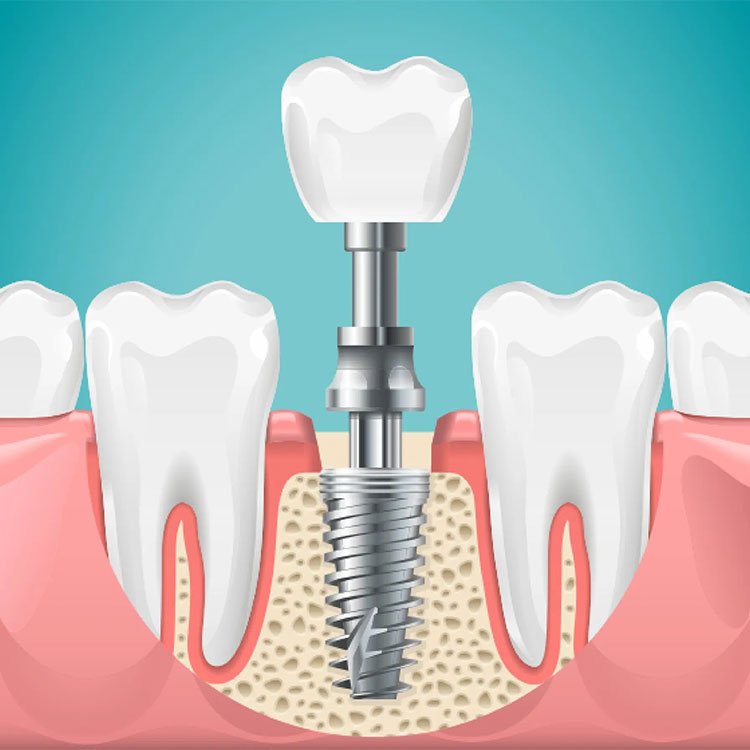Dental implants have revolutionized restorative dentistry, offering a robust and effective solution for individuals suffering from tooth loss. As a vital component of modern dental care, implants provide significant benefits over traditional restorative methods. This article delves into the role of dental implants in restorative dentistry practices, exploring their advantages, types, procedures, and impact on patient outcomes.
Understanding Dental Implants:
Dental Implants in Dubai are titanium posts surgically inserted into the jawbone to serve as artificial tooth roots. They provide a stable foundation for fixed or removable replacement teeth, commonly referred to as crowns, bridges, or dentures. The implants integrate with the jawbone through a process called osseointegration, creating a secure and lasting bond. This process mimics the natural function of teeth and offers several advantages over other restorative options.
Types of Dental Implants:
- Endosteal Implants: These are the most common type of dental implants. They are inserted directly into the jawbone and can hold one or more prosthetic teeth.
- Subperiosteal Implants: These are placed under the gum but above the jawbone. They are typically used for patients with insufficient bone height or those who cannot undergo bone augmentation procedures.
- Zygomatic Implants: These are longer implants anchored in the zygomatic bone (cheekbone) and are used for patients with severe bone loss in the upper jaw.
The Importance of Dental Implants in Restorative Dentistry:
Dental implants play a crucial role in restorative dentistry for several reasons:
Improved Functionality:
Dental implants restore the functionality of natural teeth, allowing patients to chew, speak, and smile with confidence. Unlike traditional dentures, which can slip and cause discomfort, implants provide a stable solution that mimics the performance of real teeth.
Aesthetic Benefits:
Implants are designed to look and feel like natural teeth. The crowns placed on top of the implants can be color-matched to the surrounding teeth, ensuring a seamless appearance. This aesthetic advantage enhances the overall smile and boosts self-esteem.
Preservation of Jawbone:
One of the significant benefits of dental implants is their ability to preserve jawbone health. When a tooth is lost, the jawbone can begin to deteriorate due to lack of stimulation. Implants stimulate the jawbone, preventing bone loss and maintaining the facial structure.
Longevity and Durability:
Dental implants are highly durable and can last many years with proper care, often a lifetime. This longevity makes them a cost-effective option in the long run, as they reduce the need for frequent replacements or adjustments compared to traditional dentures or bridges.
The Dental Implant Procedure:
The dental implant process typically involves several stages, which may vary depending on the individual case. Here’s an overview of the standard procedure:
Initial Consultation:
The process begins with a comprehensive evaluation by a dental professional, including a review of medical history, dental examination, and imaging tests (like X-rays or CT scans) to assess bone density and structure.
Treatment Planning:
After the initial assessment, a customized treatment plan is developed. This plan outlines the type of implant, the number of implants required, and any additional procedures, such as bone grafting, if necessary.
Surgical Placement of Implants:
The surgical placement of dental implants is usually performed under local anesthesia or sedation. The dentist makes an incision in the gum to expose the bone, drills a hole into the jawbone, and places the titanium implant. The gums are then stitched closed, and a healing period of several months is allowed for osseointegration.
Abutment Placement:
Once the implants have integrated with the bone, an abutment is attached to the implant. The abutment acts as a connector between the implant and the final restoration. This stage may require another minor surgical procedure.
Crown Placement:
After the gums have healed around the abutment, a custom-made crown is created and attached to the abutment. This final step completes the restoration, giving the patient a fully functional and aesthetically pleasing tooth replacement.
Patient Outcomes and Satisfaction:
The impact of dental implants on patient outcomes in restorative dentistry is profound. Studies have shown high success rates, with implants providing significant improvements in quality of life. Patients report enhanced chewing ability, improved speech, and greater overall satisfaction with their dental appearance.
Addressing Common Concerns:
Despite their many benefits, some patients may have concerns regarding dental implants. Common issues include:
- Cost: Dental implants can be more expensive upfront compared to traditional dentures or bridges. However, considering their longevity and durability, they often prove to be a more economical choice in the long run.
- Surgical Procedure: The thought of undergoing surgery can be daunting. However, advancements in technology and sedation techniques have made the procedure more comfortable and less invasive.
- Maintenance: Like natural teeth, dental implants require proper oral hygiene and regular dental visits. Patients must commit to maintaining their oral health to ensure the longevity of their implants.
Conclusion:
Dental implants are an essential aspect of restorative dentistry, offering a reliable and effective solution for tooth loss. Their ability to enhance functionality, aesthetics, and jawbone health, combined with their long-term durability, makes them a preferred choice among both patients and dental professionals. As technology continues to advance, the role of dental implants in restorative practices will only grow, providing individuals with renewed confidence and improved quality of life. Whether for a single tooth replacement or a full arch restoration, dental implants stand out as a transformative solution in modern dentistry.





Comments